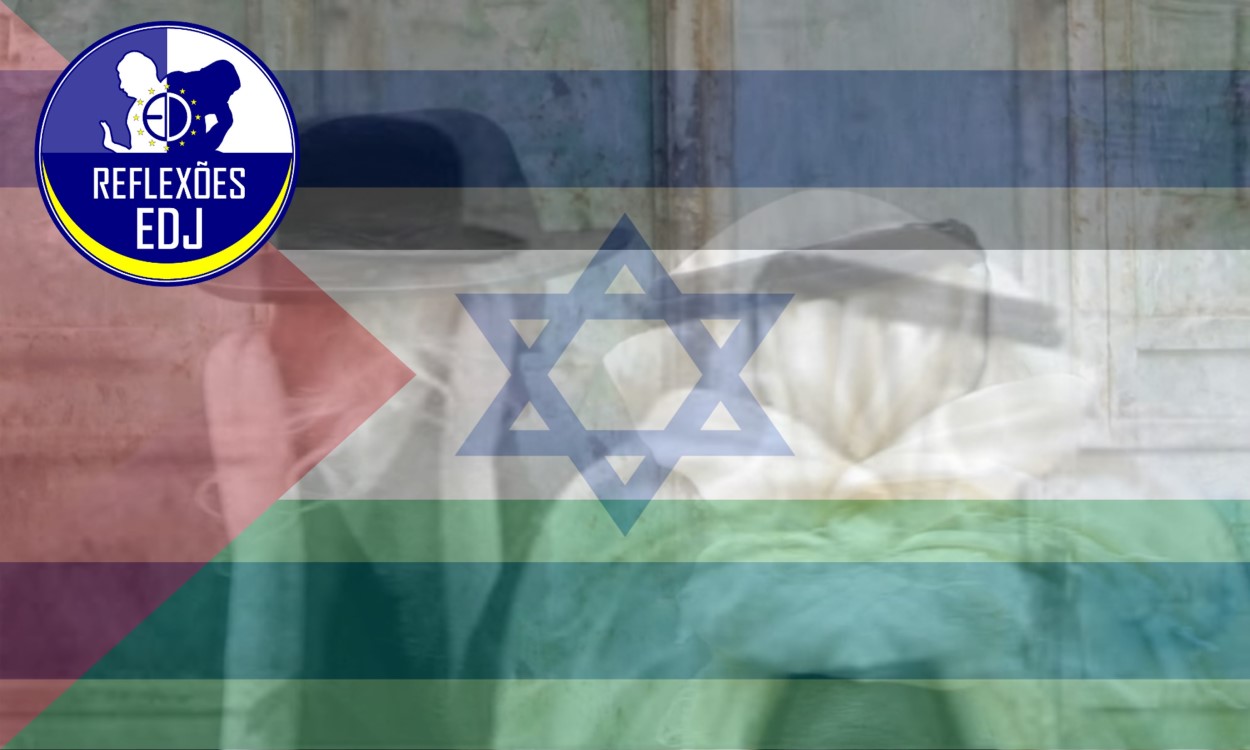Since the October 17th attack that gave rise to the Israel-Hamas war, we have witnessed an unprecedented support for a Two-State solution, although for a long time the idea of an Israeli state and a Palestinian state existing in peace and security side by side was considered hopeless naive or even a dangerous illusion.
United States (US) President Joe Biden and his key national security advisors have stated continuously for the past months their conviction that the two-state solution is the only path to achieving enduring peace among Israelis, Palestinians, and Middle Eastern Arab nations. This viewpoint is not endorsed exclusively by the United States; leaders from across the globe including Arab nations, European Union leaders and member-states, middle powers like Australia and Canada, the Pope and even China, have also advocated for a return to the two-state framework.
This return is not difficult to explain. The two-state approach stands as the only solution where the conflict may be resolved peacefully, the other alternatives including the “conflict management” approach – pursued for the last decade by Israeli Prime Minister Benjamin Netanyahu, aimed at maintaining the status quo indefinitely and ultimately leading to the situation today; the Hamas’s solution – destruction of Israel; the Israeli ultra-right’s solution – Israeli annexation of the West Bank, the dismantling of the Palestinian Authority (PA), and the deportation of Palestinians to other countries. There is also the idea of a binational state in which, by definition, Jews would become a minority, constituting an end to Israel’s status as a Jewish state. None of those alternatives would resolve the conflict—at least not without causing even greater calamities (Indyk, 2024).
Despite the fact that Israel and Hamas perceived each other as an existential threat, the complete annihilation of Hamas constitute an unrealistic goal. If Israel is to continue exerting control in Gaza, it will be fighting off a continuous Hamas-led insurgency war—just as it fought off in southern Lebanon for 18 years against Hezbollah and other groups after invading in 1982. Realistically, the ideal scenario at the moment would be to follow the eventual negotiation of a humanitarian pause, presumably with the exchange of prisoners, opening up space for the Biden administration to bring to the table a day-after project. This would be the start of negotiations to a two-state solution, leading to the constitution of a credible governing authority in Gaza and to the taking advantage of this key opportunity from the Palestinian Authority (PA) to unite the West Bank and Gaza in a single Palestinian polity. We have witnessed last week an early attempt by the International Community at moving in this direction – through the draft-resolution proposing full UN membership for Palestine. The Security Council did not adopt the resolution, with 12 votes in favour, two abstentions, and a veto from the US ambassador Robert Wood (UN News, 2024). A notoriously too early step, although in the right direction.
The PA needs in first place, a revitalization – a new prime minister, a new set of competent technocrats who are not corrupt, a trained security force for Gaza, and reformed institutions that no longer incite against Israel or reward prisoners and “martyrs” for terrorist acts against the Israelis. In this sense, the PA authority seems to be taking steps on the right direction, with the decision of the Palestinian president Mahmoud Abbas to change his Prime Minister and bring in a technocratic government to start the process of revitalization, and the recently taken steps to remove the pay-to-slay arrangements that caused the Palestinian authorities so many problems with the United States and Israel (Foreign Affairs, 2024). This became possible through a common conviction on the part of the United States, the Arab Sunni leaders – led by Saudi Arabia – and the international community – that exerting pressure on the two sides forces them to come up with some way forward. The United States and the Sunni Arab states, including Egypt, Jordan, Saudi Arabia, and the UAE, are already engaged in detailed discussions with the PA and seem satisfied that the PA is willing to undertake them. But it will require the active cooperation and support of the Netanyahu government, which adamantly opposes a PA role in Gaza and has so far refused to make any decisions about the “day after” there. (Indyk, 2024). Nevertheless, this opposition from Netanyahu has also a positive effect by increasing the credibility of the PA – that must at all costs avoid being seen as sub-contractor for Israel when the challenge of filling the vacuum left by the eradication of Hamas rule presents itself.
But even if we consider that the process of revitalization of PA started, it would probably take around a year to train and deploy PA security and civilian cadres in Gaza. During this period, Israel would likely undertake some military activity against residual Hamas forces. In the meantime, an interim governing body would need to run the territory. That entity would need to be legitimized by a UN Security Council resolution and would oversee the gradual assumption of responsibility by the PA. It would control a UN peacekeeping force tasked with maintaining order which would need to be led by a U.S. general in order to prevent frictions with the neighbouring Israeli Defense Forces (IDF). But there would be no need for American boots on the ground: troops could come from other countries friendly to Israel that have deep experience in peacekeeping operations and would be acceptable to the Palestinians, including Australia, Canada, India, and South Korea. Sunni Arab states should be invited to participate in the force, although it is unlikely that they would want to take responsibility for policing the Palestinians. The UN peacekeeping missions tend to be more successful and cost-effective in circumstances in which a permissive entry is possible and no more than 20,000 troops are needed (Dobbins, 2014). This goes hand-in-hand with the main line of thought that have marked the US Foreign Policy since the Bush administration, a politics of Containment rather than a more ambitious approach (Shapiro, 2007).
This is not to undermine the role of the US in this conflict. Faced with an uncooperative prime-minister in the Israeli side, we have witnessed a recent shift in US policy towards Israel, with diplomatic efforts by Secretary of State Antony Blinken and the declarations of President Biden and Senate Leader Chuck Schumer made in order to avoid irreversible escalations of the conflict and calling for a moderate posture, even after the Iran missile attacks (whose influence in Hamas and other Islamic military groups must be considered). Both sides are aware of Israels’ need for US support, and the cooperative pressure from US is plausibly the main enabler to the process moving forward, without disregarding Netanyahu’s’ deep understanding and handling of Israeli politics.
In terms of increasing the success rate of a two-state solution negotiation itself, the history has taught us the critical importance of cultivating legitimacy through grass roots support and taking special attention into the role that business leaders can take as mediators and peace negotiators – business by nature benefits from a peaceful and stable economic environment, one that can attract investment and a qualified workforce, and generates employment. We have seen an attempt at this idea at the 2002 World Economic Forum (WEF) with the movement Breaking the Impasse (BTI) which tried to replicate the central role that the Consultative Business Movement (CBM) had in peaceful democratic transition in South Africa. We can learn from the failure of BTI, promoting instead a bottom-up idea with efforts to build grass-roots support in Palestine and Israel, constituted of business leaders not averse to the inculcated risks that come with such a project, that get involved in the negotiations themselves. These business representatives must be able to shatter the idea of political neutrality, talking with every party they deem necessary and be able to confront conflicting moral narratives – which was abundantly deficient in the BTI initiative – therefore building an order that commands support. (Shapiro, 2019).
Lastly, we must look into the role that negotiations on critical infrastructure can play as an enabler to a more extensive negotiated agreement. These would be for example the negotiations on shared water resources on the Sea of Galilee and Jordan River, the Mountain Aquifer and the Coastal Aquifer. These specific smaller-scale negotiations (although not difficult) are often decisive to the broader peace negotiation itself and achieve a more willing population through the increase in the quality of life and cooperation in neighbouring countries, as we see in the projects of EcoPeace in the region.
To conclude, the two-state solution is a desirable outcome and one in which the international community but specially the United States, Saudi Arabia and the PA must play a critical role. The greatest challenge remains to breakthrough the skepticism that the Israeli prime-minister and the Israelis in general have at the moment.
So, this effort requires a careful choreography from a wide range of actors, in a situation where we’re past the hostage problem. Despite the foreseeable political contingencies, the international community must try to look for a different future with the belief that in the end Israelis do not want the future of never-ending war. Then the two-state solution will become a matter of finding the right time to be able to articulate to them a credible alternative that they can support.
24 de abril de 2024
Alberto Ferreira
EuroDefense Jovem-Portugal
Bibliography
Indyk, M. (2024, February 20). “The Strange Resurrection of the Two-State Solution”. Foreign Affairs.
Indyk, M. (2024, April 05). “Who Still Believes in a Two-State Solution?”. Foreign Affairs.
Maloney, S. & Vaez, A. (2024, April 18). “Can Israel and Iran Step Back from the Brink”. Foreign Affairs.
UN News (2024, April 18). “US vetoes Palestine’s request for full UN membership”. UN Affairs. Retrieved from:
Dobbins, J. (2014). “A History of UN Peacekeeping”. Yale University Press. New Haven, London.
Shapiro, I. (2007). “Containment: Rebuilding a Strategy against the War on Terror”. Princeton University Press. Princeton, United States of America.
Shapiro, I. (2019). “Power and Politics in Todays’ World: DeVane Lectures. Yale University.
NOTA:
- As opiniões livremente expressas nas publicações da EuroDefense-Portugal vinculam apenas os seus autores, não podendo ser vistas como refletindo uma posição oficial do Centro de Estudos EuroDefense-Portugal.
- Os elementos de audiovisual são meramente ilustrativos, podendo não existir ligação direta com o texto.







